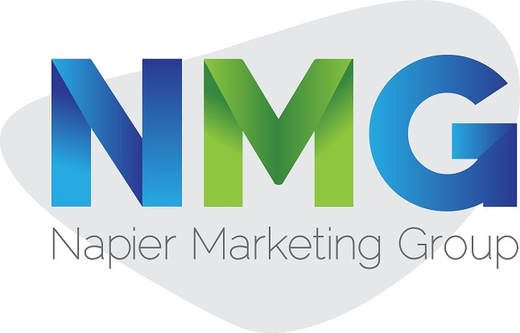How to Run a Cash-only Business
Intro:
We all love the convenience that technology has afforded us, and when it comes to transactions, things couldn’t be easier. Card payments and one-click e-payments like PayPal and Venmo have transformed the payment sector in a big way.
Still, some businesses are definitely not having it, and they only accept cash. As such, these businesses are called ‘cash-only’.
There are various reasons a business would choose to go cash-only. Some like thrift shops or diners may need that simplicity that comes with cash. Others may want to avoid the hefty fees that come with payment processors.
However, running your business on cash alone has its challenges. Since most people don’t walk around with cash, you’d be turning away many customers.
It’d help to learn how to run a cash-only business so you can make the most of it. Consider these five tips to help you run a successful cash-only business:
1. Make Things Clear Unless your business is one that’s usually associated with cash transactions, you may want to advertise that you only accept cash. It’d be terrible to blindside your customers and give them a hard time, as that is likely to discourage them from coming back.
You may start by hanging up a huge sign that makes things clear. Put that preference on your sites as well.
Additionally, remember to mention your transaction preference in your marketing efforts to alert prospective customers in advance.
2. Enforce Workplace RulesWhen accepting cash, you need a strict and reliable system that your employees can stick to.
Draft workplace rules that limit confusion, risky customer interactions, and interchanging roles.
That last point is one you definitely want to enforce because once you allow anyone to carry out any task without a valid reason, mistakes are bound to happen.
Make sure your employees have specific roles they’re accountable for, and only specific individuals handle the money. Let your team know that cash makes the business vulnerable and that you rely on them to keep the system running.
3. Maintain Robust BookkeepingBookkeeping is arguably the backbone of your business. It’s where you separate fact from fiction, and you don’t want to operate on wrong figures.
A cash-only business comes with accounting risks because you don’t have a point of reference similar to card transactions. You can always pull out statements when using payment processors, but you have to record everything manually when it comes to cash.
The good news is, before technology eased things, analog methods like cash worked just fine.
What you need is good accounting software and a qualified person behind it recording everything from transactions to vendor receipts.
4. Improve Security SystemsSecurity is a big concern for cash-only businesses, and if you don’t strengthen it early on, it may become a pain point. The primary issue is the use of cash since that can put a target on your business.
Keeping in mind that everyone who comes around is aware you have cash in the register, you need to improve your security systems.
Start by installing security cameras inside and outside the building to discourage criminal activity.
If you’ve set up business in a risky neighborhood, hiring a security guard to watch over the premises would be a good investment.
So, keep your environment in mind if you’re going cash-only because some areas have high crime rates, like Sacramento or Los Angeles, California, for instance.
You may have to consider hiring armed security guards in such places to add a layer of safety for your business, employees, and customers as well.
5. Be Careful With the Law
While the law has no problem with your cash preference, the IRS is keen on such business setups because of the high chances of tax evasion.
Simply put, there’s no electronic paper trail for the IRS to look into, and that can make them come after you.
It’s important to learn the guidelines concerning your business, such as reporting individual transactions above $10,000.
Conclusion There’s nothing wrong with a cash-only business. In fact, it has some serious advantages like minimizing transaction fraud, which is a huge problem with cashless alternatives.
However, there are genuine drawbacks to only accepting cash. It’d be wise to understand these challenges beforehand and come up with a strategy to overcome them.
We all love the convenience that technology has afforded us, and when it comes to transactions, things couldn’t be easier. Card payments and one-click e-payments like PayPal and Venmo have transformed the payment sector in a big way.
Still, some businesses are definitely not having it, and they only accept cash. As such, these businesses are called ‘cash-only’.
There are various reasons a business would choose to go cash-only. Some like thrift shops or diners may need that simplicity that comes with cash. Others may want to avoid the hefty fees that come with payment processors.
However, running your business on cash alone has its challenges. Since most people don’t walk around with cash, you’d be turning away many customers.
It’d help to learn how to run a cash-only business so you can make the most of it. Consider these five tips to help you run a successful cash-only business:
1. Make Things Clear Unless your business is one that’s usually associated with cash transactions, you may want to advertise that you only accept cash. It’d be terrible to blindside your customers and give them a hard time, as that is likely to discourage them from coming back.
You may start by hanging up a huge sign that makes things clear. Put that preference on your sites as well.
Additionally, remember to mention your transaction preference in your marketing efforts to alert prospective customers in advance.
2. Enforce Workplace RulesWhen accepting cash, you need a strict and reliable system that your employees can stick to.
Draft workplace rules that limit confusion, risky customer interactions, and interchanging roles.
That last point is one you definitely want to enforce because once you allow anyone to carry out any task without a valid reason, mistakes are bound to happen.
Make sure your employees have specific roles they’re accountable for, and only specific individuals handle the money. Let your team know that cash makes the business vulnerable and that you rely on them to keep the system running.
3. Maintain Robust BookkeepingBookkeeping is arguably the backbone of your business. It’s where you separate fact from fiction, and you don’t want to operate on wrong figures.
A cash-only business comes with accounting risks because you don’t have a point of reference similar to card transactions. You can always pull out statements when using payment processors, but you have to record everything manually when it comes to cash.
The good news is, before technology eased things, analog methods like cash worked just fine.
What you need is good accounting software and a qualified person behind it recording everything from transactions to vendor receipts.
4. Improve Security SystemsSecurity is a big concern for cash-only businesses, and if you don’t strengthen it early on, it may become a pain point. The primary issue is the use of cash since that can put a target on your business.
Keeping in mind that everyone who comes around is aware you have cash in the register, you need to improve your security systems.
Start by installing security cameras inside and outside the building to discourage criminal activity.
If you’ve set up business in a risky neighborhood, hiring a security guard to watch over the premises would be a good investment.
So, keep your environment in mind if you’re going cash-only because some areas have high crime rates, like Sacramento or Los Angeles, California, for instance.
You may have to consider hiring armed security guards in such places to add a layer of safety for your business, employees, and customers as well.
5. Be Careful With the Law
While the law has no problem with your cash preference, the IRS is keen on such business setups because of the high chances of tax evasion.
Simply put, there’s no electronic paper trail for the IRS to look into, and that can make them come after you.
It’s important to learn the guidelines concerning your business, such as reporting individual transactions above $10,000.
Conclusion There’s nothing wrong with a cash-only business. In fact, it has some serious advantages like minimizing transaction fraud, which is a huge problem with cashless alternatives.
However, there are genuine drawbacks to only accepting cash. It’d be wise to understand these challenges beforehand and come up with a strategy to overcome them.



